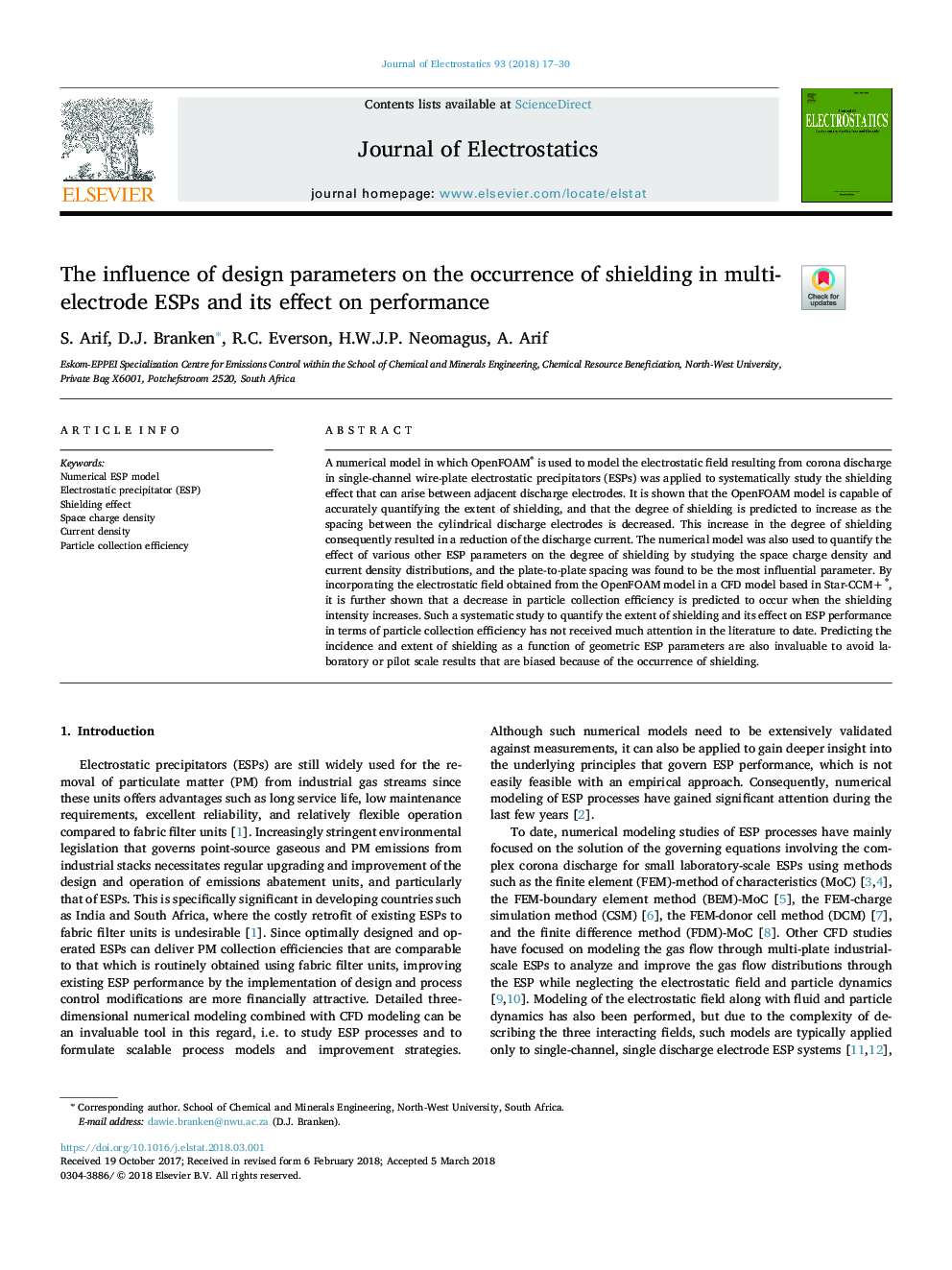| Article ID | Journal | Published Year | Pages | File Type |
|---|---|---|---|---|
| 7117100 | Journal of Electrostatics | 2018 | 14 Pages |
Abstract
A numerical model in which OpenFOAM® is used to model the electrostatic field resulting from corona discharge in single-channel wire-plate electrostatic precipitators (ESPs) was applied to systematically study the shielding effect that can arise between adjacent discharge electrodes. It is shown that the OpenFOAM model is capable of accurately quantifying the extent of shielding, and that the degree of shielding is predicted to increase as the spacing between the cylindrical discharge electrodes is decreased. This increase in the degree of shielding consequently resulted in a reduction of the discharge current. The numerical model was also used to quantify the effect of various other ESP parameters on the degree of shielding by studying the space charge density and current density distributions, and the plate-to-plate spacing was found to be the most influential parameter. By incorporating the electrostatic field obtained from the OpenFOAM model in a CFD model based in Star-CCM+®, it is further shown that a decrease in particle collection efficiency is predicted to occur when the shielding intensity increases. Such a systematic study to quantify the extent of shielding and its effect on ESP performance in terms of particle collection efficiency has not received much attention in the literature to date. Predicting the incidence and extent of shielding as a function of geometric ESP parameters are also invaluable to avoid laboratory or pilot scale results that are biased because of the occurrence of shielding.
Keywords
Related Topics
Physical Sciences and Engineering
Engineering
Electrical and Electronic Engineering
Authors
S. Arif, D.J. Branken, R.C. Everson, H.W.J.P. Neomagus, A. Arif,
